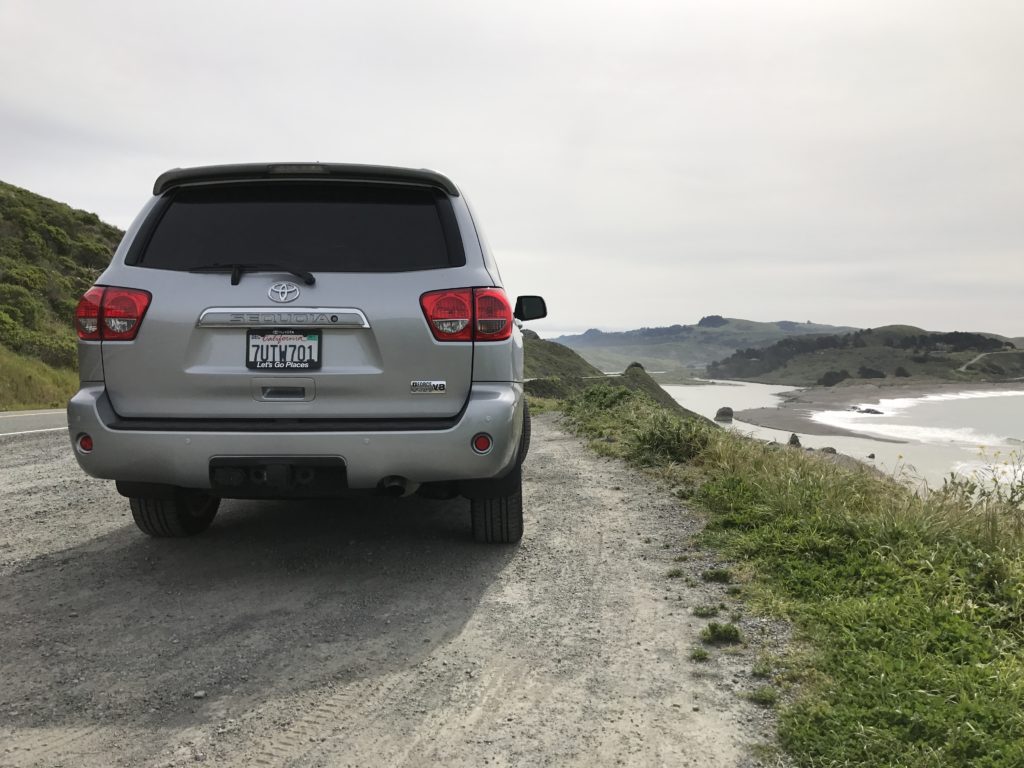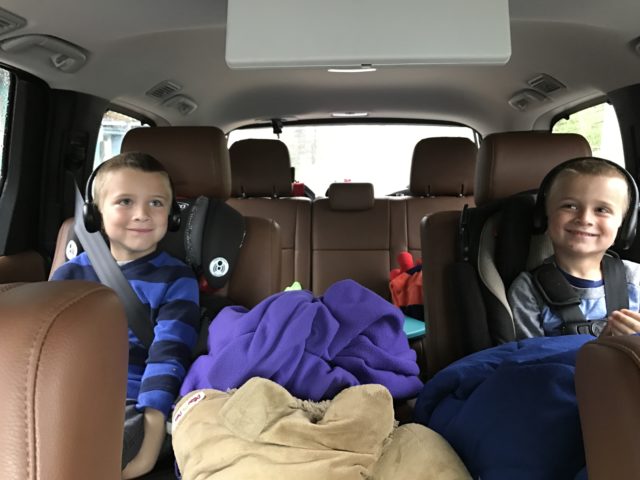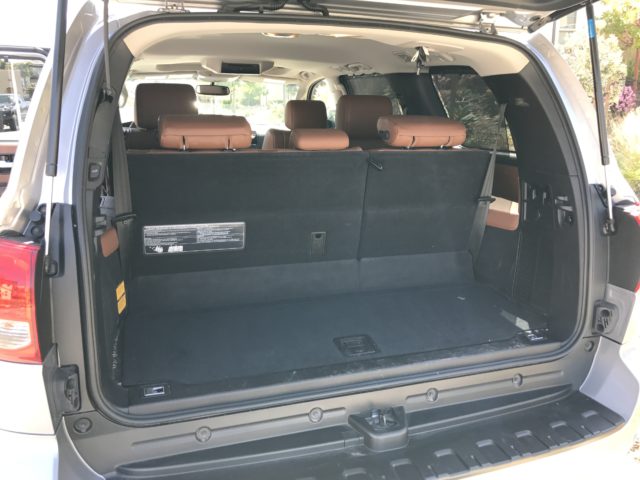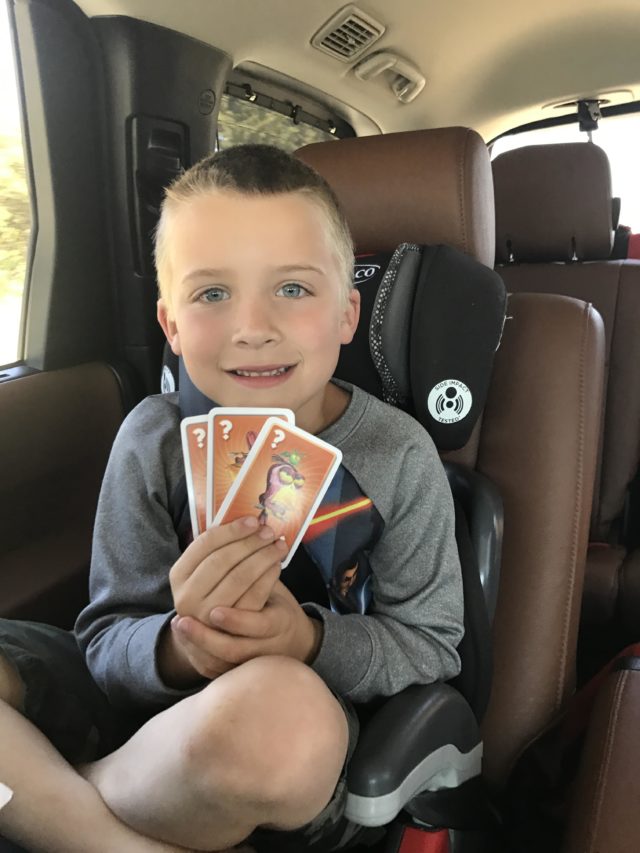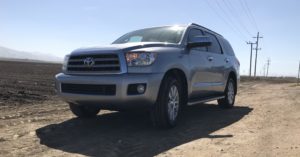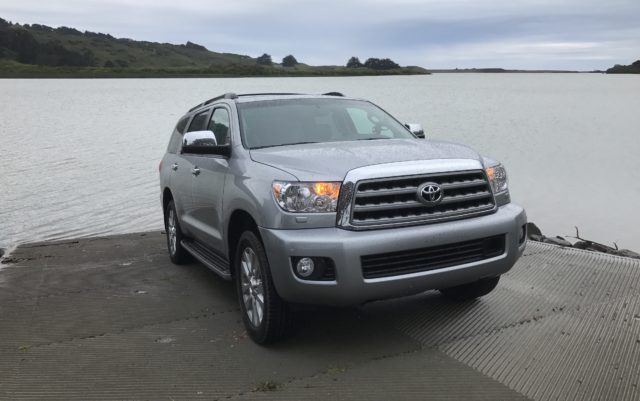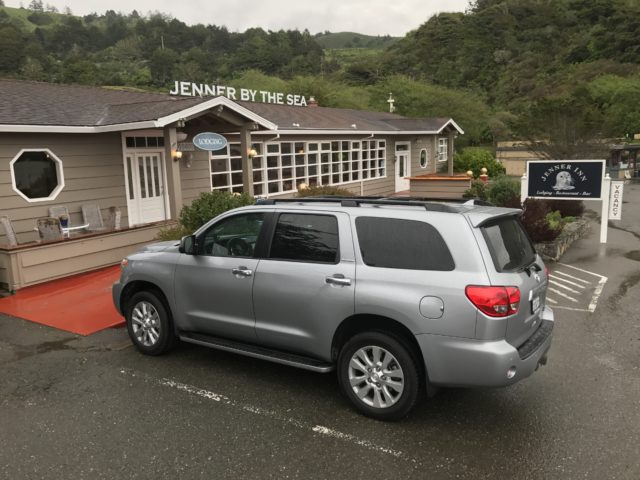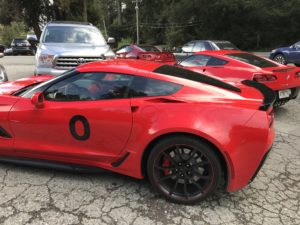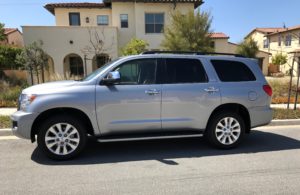YotaTech Review: California Family Road Trip in a 2017 Toyota Sequoia
What is more American than spending Spring Break on a family road trip, where the journey is just as important as the destination?
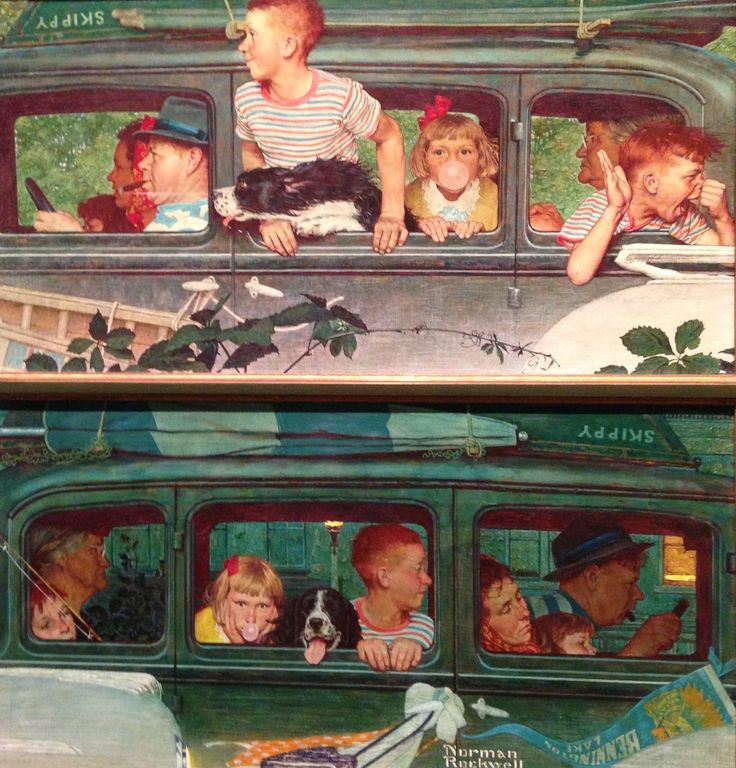
As fun as it might be to take a 1930s sedan with suicide doors to “Cars and Coffee” on a Sunday, there are better options for a family road trip. And as an auto journalist, I had choices. I would happily trade fuel economy for space to comfortably carry mom, dad, two boys, grandma and grandpa, and our gear. External storage was a non-starter – it’s like owning a house and renting a storage unit. If you cannot accommodate your stuff inside, you don’t need it! Rear seat entertainment would also be good. And as one who likes to be ready for any eventuality, something with modest off-road capability would be a plus.
My wish list limited us to one efficiently packed full-size SUV. Having experienced most of them, I elected to try the one I had not yet driven, the 2017 Toyota Sequoia. And although the Sequoia performed well across our 1,400 mile round trip I would learn why Toyota is the perennial last place finisher in the full-size SUV segment.
The market for full-size SUVs is not large. In 2016, its seven participants tallied 254,000 sales, just shy of 1.5 percent of total vehicle sales. And within the segment, GM is king. Its Chevrolet and GMC branded full-size offerings earned 75 percent of the segment last year. Ford, Nissan and Toyota are left fighting for the scraps, with widely dissimilar results. Ford moved 60,000 Expeditions last year and will be sure to gain share when the all-new Expedition is released later this year. Nissan launched an all new Armada in 2016 and is reaping the rewards with sales pacing up more than double last year’s total of 14,000 units.
The Sequoia’s 381 HP 5.7 L V8 shrugged off the load and accelerated with alacrity,
laughing at minivans on uphill freeway on-ramps.
Then there is Toyota. The current generation Sequoia dates to 2008 and has never been popular. Toyota sold just 12,771 units in the United States last year. In fact, sales for this entire generation of Sequoias total just seven months of GM full-size SUV sales. Toyota builds reliable products with a solid mainstream appeal, and on paper, there is little to suggest why Sequoia is in the sales basement. It took me a few miles to begin uncovering its shortcomings.
Space is not one of them. The interior is capacious, as any vehicle stretching over 17 feet should be. The front and middle rows get healthy leg and headroom. Even the third row is adult-friendly. We packed like we were flying, with one standard roll-on bag a piece. Our six roll-ons stowed snug behind the third row. And as for all the miscellanea that goes along with taking a three and five-year-old on the road for a week, it all fit comfortably elsewhere. The two-tiered second-row console is massive. Storage cubbies, pockets, and cup holders abound.
Going just about anywhere from San Diego requires first clearing L.A. The Orange County-L.A. conurbation is easier to cross than Mexico City or Mumbai, but it requires planning and patience. When done wrong, it’s one of the longest 130 miles in America. We did it wrong. My plan to depart at 6 a.m. was obviated by the presence of other family members. Lesson number one: Don’t leave San Diego northbound at 11 a.m. on a Saturday. Two bathroom breaks, one McDonald’s stop, and six hours later, we reached Ventura. While in motion, we averaged 26 miles per hour.
The Sequoia drove well. Its venerable 381 horsepower 5.7 liter V8 shrugged off the load and accelerated with alacrity, laughing at minivans on uphill freeway on-ramps. The ride is smooth and predictable. This rig is right at home carrying lots of people and things. And in Platinum trim, it has most of the comforts we have come to expect. It is not however as quiet as the competition. At speed, the wind noise makes front to back communication uneven.
We made our way up the coast over the next two days, planning to visit Hearst Castle on our way to San Francisco via Big Sur and Monterey. However, incessant rains had knocked out Highway 1, in four places. But when one road closes, another opens. Our inland detour revealed the most vibrant green mountains and countryside I have ever seen through this stretch of central California. From Santa Barbara to Salinas the middle third of California was a verdant masterpiece of oak, grasslands, and chaparral generously dusted with wildflowers.
We arrived at our hotel near the Embarcadero in San Francisco and parked the Sequoia for two car-less days we had promised the kids. The prime highlight was the Exploratorium, a world class 330,000 square foot monument to learning and curiosity. It was more engaging for ourselves and our children than any Disney property.
On our way to Jenner (pop. 136) on the Sonoma Coast, 75 miles north of San Francisco, we traversed the Golden Gate Bridge. It was a must, though the reality may not have matched the hype for the kids. The lonely stretch of coastline from Bodega Bay to Jenner is an 11-mile twisting delight. Here, Highway 1 tracks the bluffs along the coast so close it risks tumbling into the sea, and in one place it did a couple weeks prior to our visit. Sure, I’d rather be driving an 86 along the coast, but then I’d miss out on my kids discovering a harbor seal colony at the mouth of the Russian River or their amazement at the thousand-year-old, 300-foot tall Sequoias towering overhead in Armstrong Redwoods State Natural Reserve. Strong and large, it’s not difficult to see why Toyota chose these trees as the namesake for their big SUV.
Jenner was the apogee of our trip. After two days there, we began our southward sprint. Crossing the Golden Gate again, we navigated to one of the Bay Area’s premier driving destinations. You may not have traversed Skyline Boulevard, but you have probably seen it (most recently here). It roughly traces the crest of the coast range from San Francisco to Santa Cruz. Its undulating path over a well-maintained surface darts in and out of mature redwood stands and grasslands with occasional ocean views. We stopped for lunch at rustic Alice’s Restaurant and even on a weekday afternoon, the car spotting was fantastic, except when a Corvette club nearly blocked us into the parking lot.
The Sequoia’s spacious interior, easy driveability, dynamic cruise control
and reasonable third-row access made it comfortable for everyone.
We closed the day at the Santa Cruz Beach Boardwalk before crashing at what may be the first hotel in California to fall victim to sea level rise. The well named Venetian Hotel was a great deal, but the sandbags in front of the each door were an ominous sign of its proximity to the Pacific. Fortunately, there was no storm that night.
We were up early the next morning to tackle an ambitious schedule. The Monterey Bay Aquarium was an hour away and we needed to be there when it opened at 9:30 a.m., because any less than three hours there would not do. And we still had to drive another 300 miles to Santa Barbara that afternoon. The aquarium was a hit with all generations. The Sea Otter Feeding was predictably cute but the Open Sea Feeding was the real marvel. Here you can stand before a 90-foot window and watch tuna take runs at tens of thousands of schooling sardines. I do not envy the people tasked with cleaning that window.
The drive to Santa Barbara brought a low dark overcast and torrential rain. Living in Southern California, it was the first time I had encountered conditions that prevented the use of dynamic cruise control. Fortunately, Toyota made the system dynamic so it can also function as a traditional cruise control. As soon as we cleared the inclement weather, its full functionality returned.
After visiting with friends in Santa Barbara, we decided to put the kids in pajamas and drive the final 180 miles home. Clearing greater L.A. was not so bad starting at 8 p.m. on a Friday night. We averaged 60 mph and pulled into our driveway at 11.
Was the Sequoia a good road trip companion? Absolutely. Its spacious interior, easy driveability, dynamic cruise control, rear seat entertainment and reasonable third-row access made it comfortable for everyone. We never did take it off road, so the fuel economy (14.1 mpg observed) and space penalties versus a minivan were real. Nonetheless, I wouldn’t trade the big SUV experience for any alternative, though next time I may go for the upcoming 2018 Sequoia TRD Sport.
Sequoia starts at $45,560 for an SR5, but you won’t find many on dealer lots. Most Sequoias are spec’d in Limited or Platinum trim. Our four-wheel drive Platinum tester started at $65,315. There was only one option (wireless headphones) because the Platinum comes with everything. Its final MSRP was $66,590 plus $1,195 destination. Sequoia has just four direct competitors, and each has their merits. But the Sequoia is the Toyota of full-size SUVs, easy to live with, visually unobtrusive, and devoid of gimmicks. It is the easy choice for Toyotafiles.

